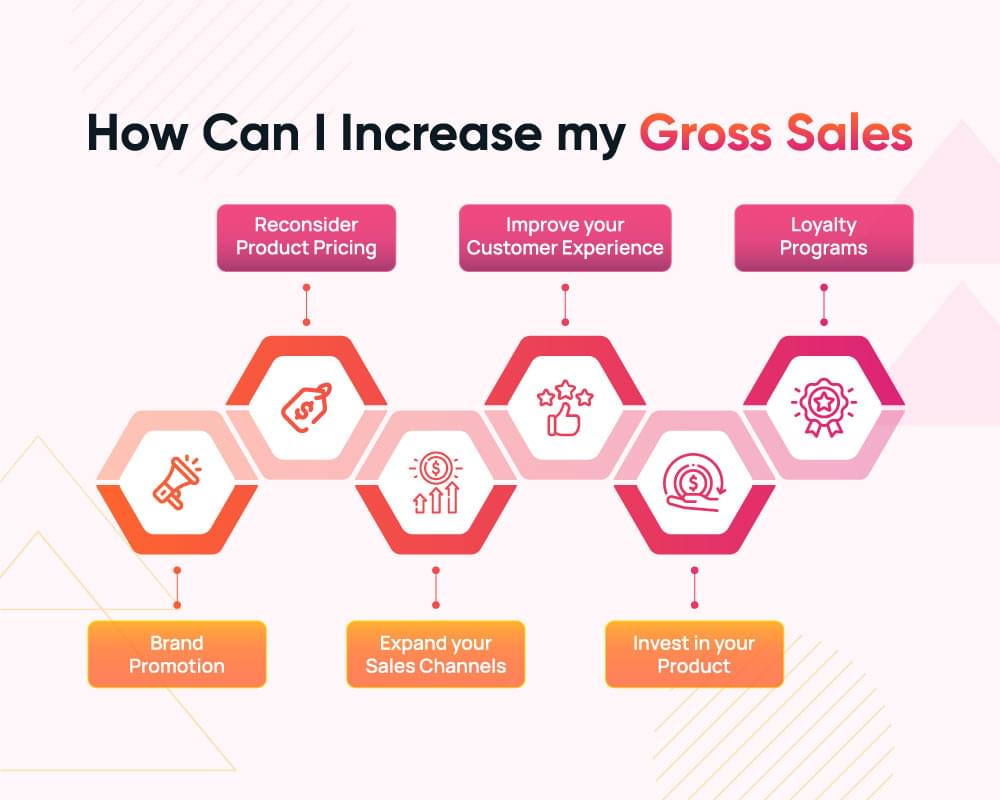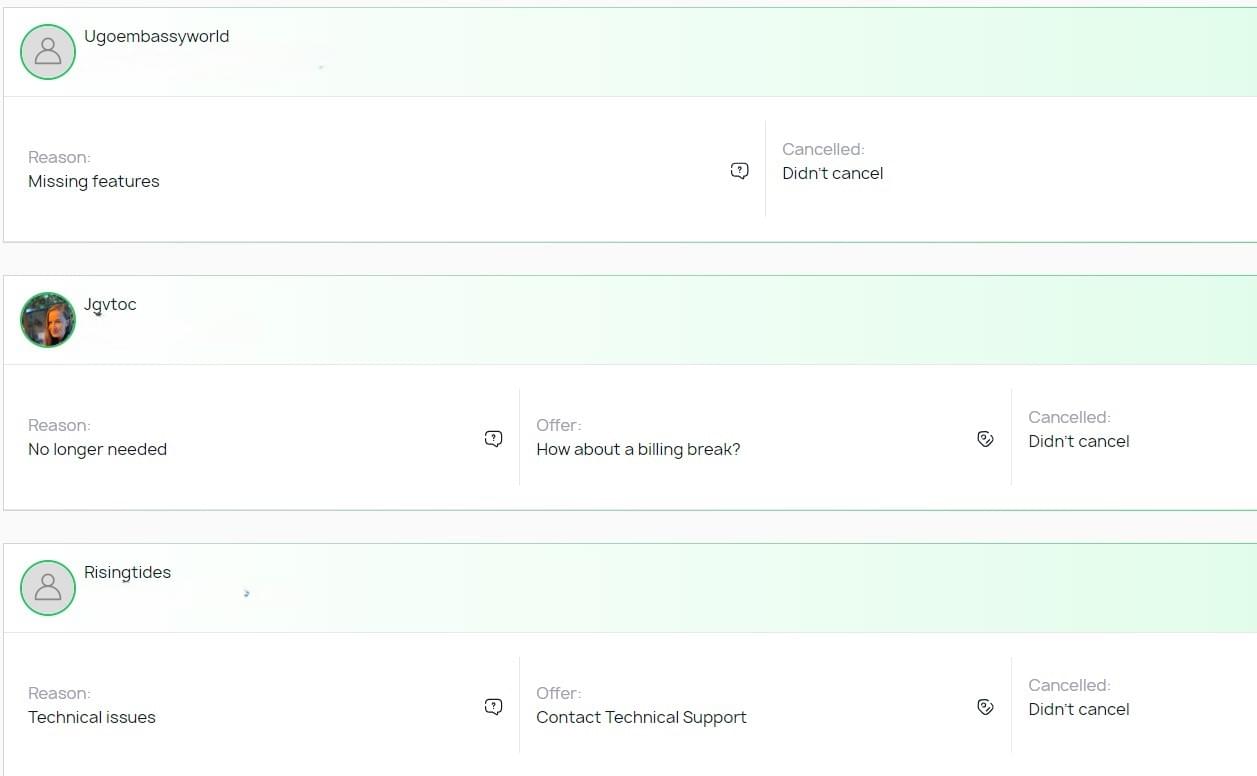
What is Gross Sales? Formula, Calculation, and More

Let’s try to answer some very common questions about the topic what is Gross Sales or what is meant by Gross Sales? The answer is very simple.
What is Gross Sales?
Gross sale is the total sales revenue from selling goods or services before any kind of deductions like COGS. It is the number one figure that shows the full amount of income earned through sales activities over a specific period. No discounts are adjusted, no returns or allowances or any other expenses made are taken in consideration, just ALL of your company’s sales in any time span of your requirement will be your Gross Sales of that time.
Gross sales sums up all the sales transactions, regardless of whether the customers paid in full, received discounts, or returned the product. Gross sales are usually consistently calculated in retail industry.
Discounts, allowances and returns are adjusted in net sales. Here’s how Gross sales and net sales are different from each other. And if you want to understand where churn and contractions are adjusted in the income statement to calculate the revenue, net revenue retention is the read to click at.
If you have read till now, I hope you understand the basic idea. Keep reading and we will discuss gross sales formula in detail, why Gross sales are important, how you can improve them and their role in providing clear picture of your company’s revenue performance.
How to Calculate Gross Sales
Gross sales formula is straightforward, just sum up the total revenue from all sales transactions within your desired period of time. Its formula is:
Gross Sale Formula
Gross Sales = Total Units Sold x Sales Price Per Unit

Let’s understand the formula with an example, if you sold 2,000 units of a product at $50 per unit, the gross sales would be:
Gross Sales = 2,000 × $50 = $100,000
This gross sales amount does not account for any returns, discounts, or allowances.
How can I Add Gross Sales into Income Statement?
Gross sales are normally excluded from income statement, however, when included it is followed by net sales and then total revenue. Here’s how it’s done.
| Column 1 | Column 2 |
|---|---|
| Gross sales | 850,000 |
| Less Discounts | 15,000 |
| Less Allowances | 1,000 |
| Less Returns | 7,000 |
| Net Sales | 827,000 |
| Less COGS | 12,000 |
| Rent | 17,000 |
| Total Revenue | 798,000 |
Calculate total sales before any deductions. This is your gross sales figure.
On the income statement, list gross sales at the top of revenue section.
Deduct returns and allowances and discounts – this is your net sales figure
Continue with other revenues; add any other source of revenue below the net sales figure.
Sum up all the revenue sources and calculate total revenue.
What Gross Sales can tell about Revenue?
To learn about your company’s market position and overall financial situation, calculating Gross sales can be helpful. With the help of examples and supporting data, let’s see what gross sales might reveal about revenue performance of your business.
Know your Market Demand
The demand for your goods or services in the market is directly reflected in your gross sales. An increase in gross sales clearly signifies a strong market presence because it shows that more clients are buying what you have to offer. On the other hand, decreasing gross sales can indicate that you should review your product line or market tactics.
Take the example of Apple which announced gross sales of over $394 billion for 2023, representing the continuous demand for its products around the world. These sales figures show how well Apple has developed its products and implemented its marketing plans which resulted in steady demand from customers.
Build Sales Strategies
Tracking the gross sales of your business to check how successful your sales tactics are can be very effective. Companies are able to see which of their in-place strategies result in revenue growth and which ones could require change or should be replaced by new ones. Sales strategies could significantly improve when gross sales is compared over various time periods.
Amazon provides a great example when it saw surge in its gross sales during the COVID-19 pandemic as the company adapted its sales strategies to meet the changing needs of consumers. In 2020, Amazon’s gross sales reached $386 billion, up from $280 billion in 2019, indicating the effectiveness of its response to market conditions amidst pandemic.
Are You Making use of Seasonal Trends
The latest consumer spending data from NRF and Prosper Insights & Analytics 2024 Super Bowl survey found that a record 200.5 million U.S. adults planned to tune in to the big game. This year, 112.2 million people planned to throw or attend a party, and another 16.2 million plan to watch the game at a bar or restaurant. Total spending on food, drinks, apparel, decorations and other purchases for the day was expected to reach a record $17.3 billion, or $86.04 per person.
This is one of the many examples on power of consumer spending in any particular season. Though not every retail business benefits from seasonal trends for those who do, planning ahead of time can bring lots of sales.
Gross sales data can help your business predict changes in seasonal demands; modify your inventory and your marketing strategies accordingly. Understanding seasonal trends allows businesses to optimize their operations, ensuring they are well-prepared to meet customer demand during peak days.
Recognize Possibilities for Growth & Measure Your Performance
Growth prospects can be found by analyzing gross sales across various product lines, client categories, and regions. Businesses can direct resources to grow the parts of their operations that generate especially high gross sales by identifying those areas.
For instance Tesla’s gross sales in the Asia-Pacific area have been rising quickly, with China becoming as the company’s biggest market outside of the US. China accounted for $13.8 billion of Tesla’s total gross sales in 2021, up 102.9 percent from the year before. This expansion indicates potential for more growth in the area.
Gross sales can be useful to compare the success of your business to that of your competitors. You can determine your market share and competitive position by comparing gross sales figures.
Improve Revenue Quality
Although gross sales give an overview of revenue, examining them alongside other metrics, such as net sales and gross profit, guides a more complex yet detailed picture of the quality of revenue. Low net sales and gross sales could be a sign of problems like high return rates or excessive discounts which could be harmful to long-term business.
Take the example of Groupon, which reported high gross sales but struggled with profitability due to heavy reliance on discounts and promotional offers. As a result, Groupon’s net income has consistently been lower than its gross sales, raising concerns about the sustainability of its business model.
In short, gross sales conveys a simple and straightforward message about the revenue and sales of your company and it is a useful metric for how the business is performing in its market over time.
How Can I Increase my Gross Sales
Increasing gross sales is the primary goal of any business because it’s about business’s revenue and profitability.
However, increasing gross sales can be a complex process. You will need to approach it strategically by developing a grand plan which will include from increasing marketing efforts to improving product and customer experience. Below is a brief closer look at some actionable steps you can take.

Improve Brand Promotion Approach
Monitor how effective your marketing strategies are. Are they really bringing you enough sales? Are they worth the marketing budget? Are they attracting new customers and encouraging repeat business?
If you are marketing via digital marketing and content marketing, evaluate how effective SEO and PPC adverts are and how engaging the blog posts or infographics are.
Reconsider Product Pricing and Product Offerings
Often times reviewing your product price helps you align with the market demand and brings you more sales. Research your competitors and adjust your product price if you need to. Offer product discounts or complementary products or services. For example, a company selling smartphones might introduce accessories like cases, or screen protectors etc.
If you are a high-priced brand, understand the value or service that your brand provides to customers other than the cost. Highlight the unique features and benefits to justify the higher price; up-sell and cross-sell on the basis of these features to increase gross sales.
You can use Churnfree - a cancellation flow tool to find out the reasons of customers churning. Ask them if budget and pricing is their reason to churn. And if many customers leave due to budget issue then overall make a pricing adjustment.

Expand Your Sales Channels
You can improve your product sale by increasing sales channels. If you are not already selling online, consider E-commerce sales. E-commerce sales are expected to make 22% of global retail in 2024. Similarly, see if affiliate marketing and partnership with influencers or other businesses works for you to boost sales.
Improve Your Customer Experience
Customer experience with your business is an extremely important factor in their purchasing decision. A company’s sales definitely increase when its customers get a positive experience as it brings referrals and loyal customers.
Make sure that your customer service team is responsive and knowledgeable. Empower them and incentivize their work. Use customer data to effectively communicate with them so that they are comfortable discussing their concerns and feel privileged.
Keep Investing in Your Product
Churnfree states product experience as the most direct cause of customer loyalty. Gross sales heavily depend on the quality of your product. Keep investing in your product development to keep customer interested in buying it. Investment in customer feedback and R&D can help you build new features in your product or improve it where needed. You can use services like Churnfree for customized features to get effective customer feedback.

Focus on Retention and Loyalty Programs
This could be your long-term planning for sales growth and profitability. You can work on customer retention management techniques to improve business sales. You can implement tactics to map a customer’s journey with your business to identify the right-customers – the ones which have the potential to grow with you. Offer them loyalty programs like exclusive offers to repeat customers etc.
These processes require company-wide efforts but are extremely fruitful in bringing you more sales by improving customer loyalty and reducing churn.
Limitations of Gross Sales – is it a misleading metric?
Gross sales are mostly significant to retail businesses. When considered in isolation, gross sales can be meaningless. It is challenging, for example, to determine whether gross sales are high or not if you are unaware of the average gross sales of overall industry or product returns of your own business.
Gross sales are normally not on the income statement. More often, net sales is reported as total revenue especially for external business analysts. Gross sales is mostly used internally among corporate finance professionals.
So yes, if gross sales is used alone and other factors like cash flow, profitability etc are not considered, it can be misleading.
What is trade % to Gross Sales?
The trade % to gross sales is used to calculate proportion of trade-related expenses relative to gross sales. It includes costs like trade discounts, allowances and returns.
Trade Percentage to Gross Sales = (Gross SalesTrade Expenses)×100

Can Gross Sales be Negative?
No, gross sales cannot be negative as it represents total sales revenue.
How are Gross Sales Related to Gross Profit?
Gross Profit is rhe amount after subtracting the cost of goods sold (COGS) from net sales and net sales is derived from gross sales.
Does Gross Sales Include Taxes?
No, gross sales does not include taxes, however some business include taxes since gross sales is an internal figure.


